Toramana portrait.jpg on:
[Wikipedia]
[Google]
[Amazon]
Toramana also called Toramana Shahi Jauvla (


 ''Toramāṇa'', ruled circa 493-515 CE) was a king of the Alchon Huns who ruled in northern India in the late 5th and the early 6th century CE. Toramana consolidated the Hephthalite power in Punjab (present-day Pakistan and northwestern India), and conquered northern and central India including Eran in Madhya Pradesh. Toramana used the title "Great King of Kings" (''Mahārājadhirāja''
''Toramāṇa'', ruled circa 493-515 CE) was a king of the Alchon Huns who ruled in northern India in the late 5th and the early 6th century CE. Toramana consolidated the Hephthalite power in Punjab (present-day Pakistan and northwestern India), and conquered northern and central India including Eran in Madhya Pradesh. Toramana used the title "Great King of Kings" (''Mahārājadhirāja'' 
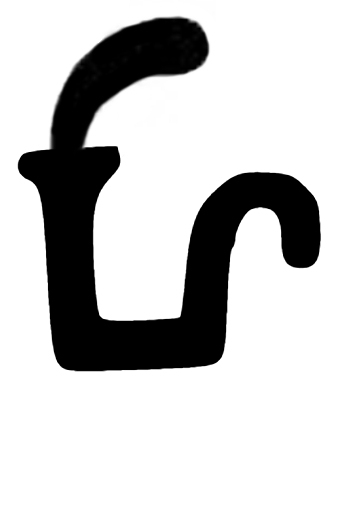
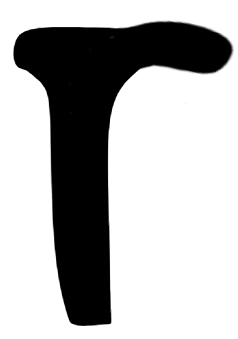

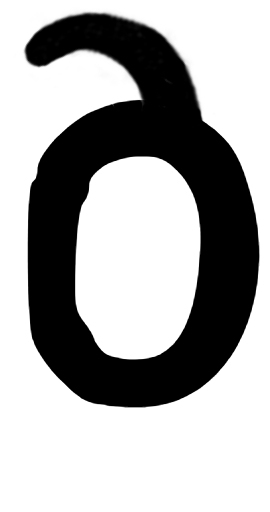

 ), equivalent to "Emperor", in his inscriptions, such as the
), equivalent to "Emperor", in his inscriptions, such as the
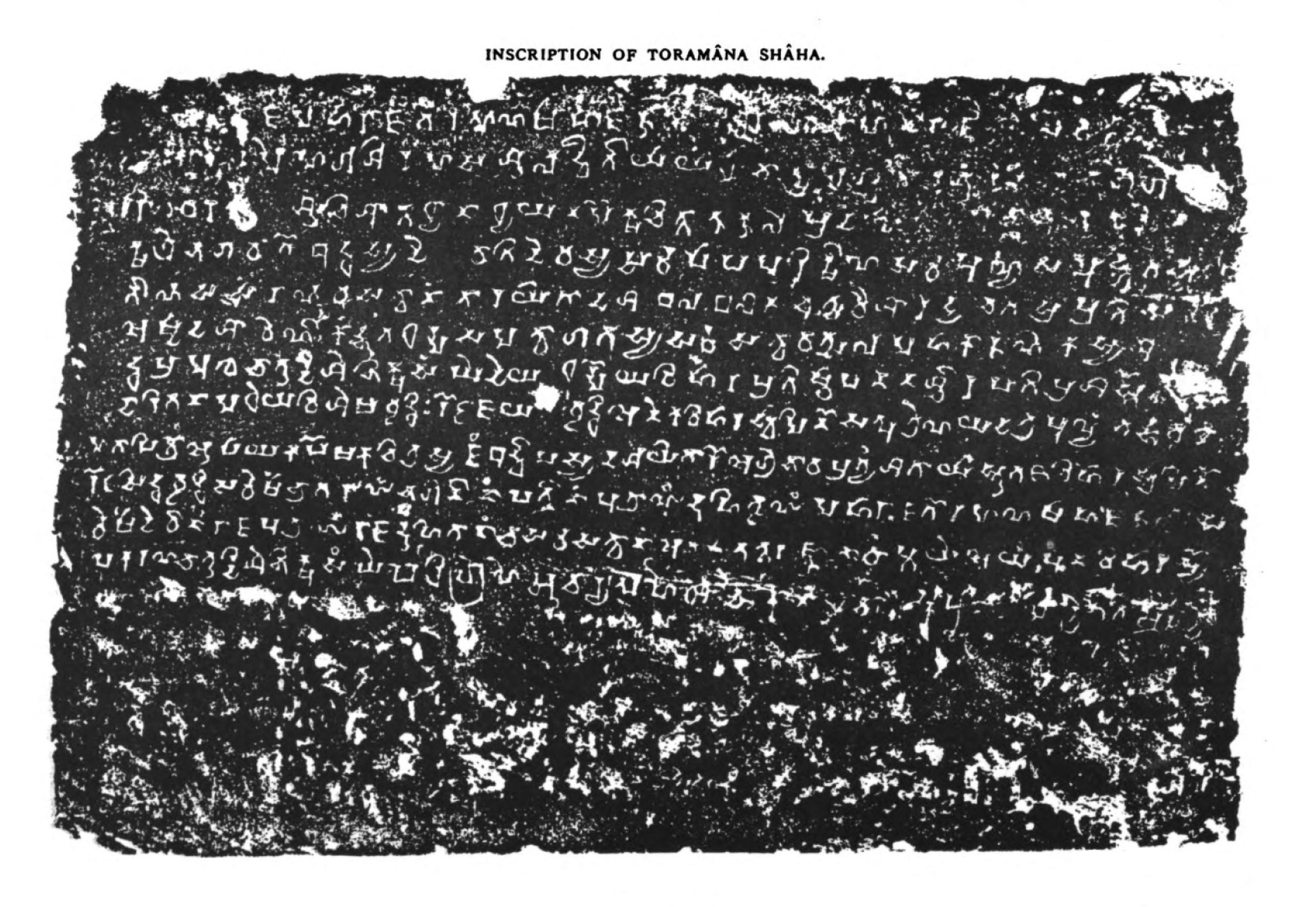

 The Eran Boar inscription (in Eran, Malwa, 540 km south of New Delhi, state of Madhya Pradesh) of his first regnal year indicates that eastern Malwa was included in his dominion. The Eran Boar inscription was erected in honor of the deity Vishnu as his avatar, Varaha.
The statue is of the deity in form of a boar, with engravings display it protecting
The Eran Boar inscription (in Eran, Malwa, 540 km south of New Delhi, state of Madhya Pradesh) of his first regnal year indicates that eastern Malwa was included in his dominion. The Eran Boar inscription was erected in honor of the deity Vishnu as his avatar, Varaha.
The statue is of the deity in form of a boar, with engravings display it protecting
/ref> and reads:
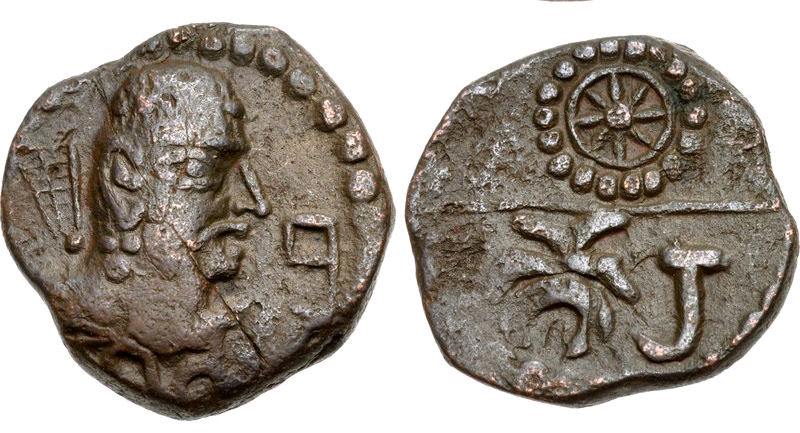
 According to the '' Rishtal stone-slab inscription'', discovered in 1983, the Aulikara king Prakashadharma of Malwa defeated him in 515 CE.
Toramana may also have been defeated by the Indian Emperor Bhanugupta of the Gupta Empire in 510 A.D. according to the Eran inscription, although the "great battle" to which Bhanagupta participated is not explicited.
A few silver coins of Toramana closely followed the Gupta silver coins. The only difference in the obverse is that the king's head is turned to the left. The reverse retains the fantailed peacock and the legend is almost similar, except the change of name to Toramana Deva.
A Jaina work of the 8th century, the '' Kuvalayamala'' states that he lived in Pavvaiya on the bank of the
According to the '' Rishtal stone-slab inscription'', discovered in 1983, the Aulikara king Prakashadharma of Malwa defeated him in 515 CE.
Toramana may also have been defeated by the Indian Emperor Bhanugupta of the Gupta Empire in 510 A.D. according to the Eran inscription, although the "great battle" to which Bhanagupta participated is not explicited.
A few silver coins of Toramana closely followed the Gupta silver coins. The only difference in the obverse is that the king's head is turned to the left. The reverse retains the fantailed peacock and the legend is almost similar, except the change of name to Toramana Deva.
A Jaina work of the 8th century, the '' Kuvalayamala'' states that he lived in Pavvaiya on the bank of the
Gupta script
The Gupta script (sometimes referred to as Gupta Brahmi script or Late Brahmi script)Sharma, Ram. '' 'Brahmi Script' ''. Delhi: BR Publishing Corp, 2002 was used for writing Sanskrit and is associated with the Gupta Empire of the Indian subcon ...
: 





Eran boar inscription
Eran is an ancient town and archaeological site in the Sagar district of Madhya Pradesh, India. It was one of the ancient mints for Indian dynasties as evidenced by the diverse coins excavated here. The site has 5th and 6th-century Gupta era t ...
.
The Sanjeli inscription of Toramana speaks of his conquest and control over Malwa and Gujarat. His territory also included Uttar Pradesh, Rajasthan and Kashmir
Kashmir () is the northernmost geographical region of the Indian subcontinent. Until the mid-19th century, the term "Kashmir" denoted only the Kashmir Valley between the Great Himalayas and the Pir Panjal Range. Today, the term encompas ...
. He probably went as far as Kausambi
Kosambi (Pali) or Kaushambi (Sanskrit) was an important city in ancient India. It was the capital of the Vatsa kingdom, one of the sixteen mahajanapadas. It was located on the Yamuna River about southwest of its confluence with the Ganges at ...
, where one of his seals was discovered.
According to the Rīsthal inscription
The Rīsthal inscription is a stone-slab inscription which was discovered in 1983 in the area of Rīsthal near Mandsaur in Madhya Pradesh, India.
The inscription describes the event in the year 515 CE, when the Aulikara king Prakashadharma of Mal ...
, discovered in 1983, the Aulikara king Prakashadharma of Malwa defeated him.Ojha, N.K. (2001). ''The Aulikaras of Central India: History and Inscriptions'', Chandigarh: Arun Publishing House, , pp.48-50
Overview
Toramana is known from Rajatarangini, through coins and inscriptions.Punjab inscription
An inscription found at Kura in the Salt Range records the building of a Buddhist monastery by a person named Rotta Siddhavriddhi during the reign of the Huna ruler Toramana. The donor expresses the wish that the religious merit gained by his gift be shared by him with the king and his family members. In the Khurā inscription (495-500, from the Salt Range in Punjab and now in Lahore), Toramana assumes the Indian regnal titles in addition to central Asian ones: ''Rājādhirāja Mahārāja Toramāṇa Shahi Jauvla''. Among which Shahi is considered to be his Title and Jauvla being an epithet or Biruda. This is a Buddhist record in hybrid Sanskrit, recording the gift of a monastery (''vihāra'') to members of theMahīśāsaka
Mahīśāsaka ( sa, महीशासक; ) is one of the early Buddhist schools according to some records. Its origins may go back to the dispute in the Second Buddhist council. The Dharmaguptaka sect is thought to have branched out from Mah� ...
school.

Gwalior inscription of Mihirakula
In theGwalior inscription of Mihirakula
The Gwalior Inscription of Mihirakula is a Sanskrit inscription recording the construction of a Surya temple from stone on the Gopa hill of Gwalior. Though now referred with the name of Mihirakula, the temple and the inscription was commissioned by ...
, from Gwalior in northern Madhya Pradesh, India, and written in Sanskrit, Toramana is described as:
Eran Boar inscription

 The Eran Boar inscription (in Eran, Malwa, 540 km south of New Delhi, state of Madhya Pradesh) of his first regnal year indicates that eastern Malwa was included in his dominion. The Eran Boar inscription was erected in honor of the deity Vishnu as his avatar, Varaha.
The statue is of the deity in form of a boar, with engravings display it protecting
The Eran Boar inscription (in Eran, Malwa, 540 km south of New Delhi, state of Madhya Pradesh) of his first regnal year indicates that eastern Malwa was included in his dominion. The Eran Boar inscription was erected in honor of the deity Vishnu as his avatar, Varaha.
The statue is of the deity in form of a boar, with engravings display it protecting rishi
''Rishi'' () is a term for an accomplished and enlightened person. They find mentions in various Vedic texts. Rishis are believed to have composed hymns of the Vedas. The Post-Vedic tradition of Hinduism regards the rishis as "great yogis" or ...
s and upholding Dharma
Dharma (; sa, धर्म, dharma, ; pi, dhamma, italic=yes) is a key concept with multiple meanings in Indian religions, such as Hinduism, Buddhism, Jainism, Sikhism and others. Although there is no direct single-word translation for '' ...
. Additionally, the statue contains Sanskrit inscriptions inscribed on the neck of the boar, in 8 lines of in Brahmi script.
It also records the building of the temple in which the current Varaha image stands, by Dhanyavishnu, the younger brother of the deceased Maharaja Matrivishnu. The first line of the inscription, made after 484/85 CE mentions the "''Maharajadhiraja Toramana''" ("The great king of king Toramana") Hans Bakkerbr>24th Gonda lecture/ref> and reads:
Sack of Kausambi
The presence of seals in the name of "Toramana" and "Hunaraja" inKausambi
Kosambi (Pali) or Kaushambi (Sanskrit) was an important city in ancient India. It was the capital of the Vatsa kingdom, one of the sixteen mahajanapadas. It was located on the Yamuna River about southwest of its confluence with the Ganges at ...
, suggests that the city was probably sacked by the Alkhons under Toramana in 497–500.
Defeats

 According to the '' Rishtal stone-slab inscription'', discovered in 1983, the Aulikara king Prakashadharma of Malwa defeated him in 515 CE.
Toramana may also have been defeated by the Indian Emperor Bhanugupta of the Gupta Empire in 510 A.D. according to the Eran inscription, although the "great battle" to which Bhanagupta participated is not explicited.
A few silver coins of Toramana closely followed the Gupta silver coins. The only difference in the obverse is that the king's head is turned to the left. The reverse retains the fantailed peacock and the legend is almost similar, except the change of name to Toramana Deva.
A Jaina work of the 8th century, the '' Kuvalayamala'' states that he lived in Pavvaiya on the bank of the
According to the '' Rishtal stone-slab inscription'', discovered in 1983, the Aulikara king Prakashadharma of Malwa defeated him in 515 CE.
Toramana may also have been defeated by the Indian Emperor Bhanugupta of the Gupta Empire in 510 A.D. according to the Eran inscription, although the "great battle" to which Bhanagupta participated is not explicited.
A few silver coins of Toramana closely followed the Gupta silver coins. The only difference in the obverse is that the king's head is turned to the left. The reverse retains the fantailed peacock and the legend is almost similar, except the change of name to Toramana Deva.
A Jaina work of the 8th century, the '' Kuvalayamala'' states that he lived in Pavvaiya on the bank of the Chandrabhaga Chandrabhaga may refer to:
Rivers
* Chenab River in Punjab, India
* Bhima River near Pandharpur, Maharashtra, India
* Chandrabhaga River (Purna River) in Maharashtra, India
Other uses
* Chandrabhaga Dam (Nagpur), Maharashtra, India
* Chandrabhaga ...
and enjoyed the sovereignty of the world.
Successor
Toramana was succeeded by his son Mihirakula.See also
*Hephthalite Empire
The Hephthalites ( xbc, ηβοδαλο, translit= Ebodalo), sometimes called the White Huns (also known as the White Hunas, in Iranian as the ''Spet Xyon'' and in Sanskrit as the ''Sveta-huna''), were a people who lived in Central Asia during th ...
* Mihirakula
* Alchon Huns
Notes
{{s-end 5th-century Indian monarchs 6th-century Indian monarchs History of Kashmir Hephthalites